Chances are, you’ve run into a camel cricket while exploring the great outdoors, especially when exploring caves. Unfortunately, when they get into your home, they can wreak far more havoc than a true cricket.
Here’s all you need to know about these critters, as well as several ways to get rid of camel crickets and keep them out of your home.
Identifying the Camel Cricket
Camel crickets aren’t like the little black ones you normally see. These guys are a light to dark brown and often have dark bands in some places or spots, depending upon the species. One species, the secret cave cricket, is a native of central Texas and has a yellowish grey coloration. Young cave crickets are translucent.
Another rare coloration is found in two species: the Arizona sand-treader cricket (Daihiniodes hastifera) and Stohecker’s sand-treader cricket (Daihiniodes larvale). They are among several species of critters that have adopted a whitish appearance to help them survive in the gypsum sands of White Sands National Park.
They get the moniker “camel cricket” due to their large, humped abdomen. Their hind legs are also much longer than a common cricket, with the body measuring 1/2 to 1-1/2 inches long and the total adult camel cricket size with hind legs and antennae coming in at up to a massive 4 inches.
The extra long antennae are vital for navigating a dark world, and they lack the sound organs that are normally synonymous with crickets.
See Also: Cricket vs Grasshopper
Common Aliases
Camel crickets are known by a few different names, depending upon your location. The most common pseudonym for these critters is cave cricket or , due to their natural habitat. They’re also sometimes referred to as camelback crickets.
These are the only crickets that look like spiders earning them the nickname of spider crickets. Finally, they are also sometimes referred to as sprickets or greenhouse crickets in some locales.
Related: 15 Types of Crickets
Natural Habitat
As the name cave cricket suggests, these critters are most often found in caves and mines. They can also be found under rotting logs, piles of damp leaves, rocks, or in your basement.
A few species have been found living near the permanent ice caps of the Andes, while others live in normally hot climates such as central Texas. As they can be found in countries all over the world, it’s easy to encounter this little guy.
What Do Camel Crickets Eat?
Camel crickets will eat just about anything organic. This includes insect eggs, dead insects (including flies, spiders, other cave crickets), tubers, fungi, roots, etc. This can pose a problem when they wander into your house, as clothing and curtains are organic materials and are likely to be turned into Swiss cheese.
When Spider Crickets Invade
Unlike other insect pests, camel crickets don’t mean to invade your home. They most often arrive by accident from a nearby shelter.
The motives may be escaping from a predator or while foraging for food or water. In some cases, they wander in through cracks in the foundation thinking it’s just another cave or animal burrow.
Once indoors, you could find them hiding in your garage, bathroom, basement, crawlspace, tool shed, or attic. Spotting a cave cricket in one of these locations can be a good indicator of moisture or entry points other, more problematic critters might try to use.
Do Camel Crickets Bite?
Unlike many other insects, crickets lack the ability to bite and are generally very passive critters. When startled or at risk, the only defense a camel cricket has is jumping.
Another thing that sets them apart from most pests is that they aren’t known to carry any disease, making them one of the safest home invaders in the world.
How High Can a Camel Cricket Jump?
Thanks to their long hind legs and quick reflexes, a camel cricket can jump as high as three feet. This amazing feat of acrobatics can help a cave cricket escape most small predators.
For larger ones (including humans), they’ll often leap towards the source of danger in an effort to startle or scare the predator away.
Why a Camel Cricket Infestation is Problematic
Even though they pose no immediate harm to your family, sprickets can cause incredible damage to your home. They not only eat your clothes, drapes, carpets, and anything else organic they can find, but will poop all over the place afterwards.
Additionally, cave crickets are communal and can usually be found in groups. They live longer than true crickets, so an infestation can explode in scale over a relatively short period of time.
How to Get Rid of Camel Crickets in the House
It’s never fun when an unwanted critter suddenly leaps out of a nearby corner. This can be doubly frustrating because a lot of products on the market are potentially dangerous to humans or pets. The following methods are all safe to use around the house.
Easy Camel Cricket Traps
One of the easiest ways to deal with a camel cricket is to grab several containers and add some Dawn and water to them. Lay them in places where you’ve seen camel crickets.
Dawn is non-toxic to pets in small quantities and will destroy the protective coating on a camel cricket’s exoskeleton. They’ll be attracted to the soapy water and drown because the coating won’t be able to provide buoyancy.
An alternative to soap is molasses. These critters will be attracted to the smell and get stuck. You can use a 1:10 ratio of molasses to water in small bowls and stick these around the house.
Home Biochemistry Methods
A lot of household substances are deadly or repulsive to cave crickets. Here are just a few:
- Boric Acid – You likely have some of this useful powder for laundry or other household uses. Simply add some to water to the boric acid make an effective bug spray.
- Cedar Oil – This attractive-smelling oil dehydrates camel crickets and can emulsify their body fats, killing them quite effectively.
- Neem Oil – An excellent natural cave cricket poison, neem oil disrupts the victim’s hormones upon ingestion, causing them to stop eating, drinking, and reproducing.
- Peppermint Oil – An effective repellent, especially when mixed with some white vinegar. Use a ratio of 1 cup water, 1/4 cup white vinegar, and 10 drops of peppermint oil. Put this mixture in an empty spray bottle and spray where needed.
Diatomaceous Earth
One of our favorite remedies against bugs, diatomaceous earth is a widely available, all-natural product. It’s made up of microscopic diatom fossils which will lacerate an insect’s exoskeleton, destroy the waxy coating, and cause them to dehydrate and die.
This stuff can be rough on the pads of cats and other smaller pets, but it’s pretty easy to place this stuff in areas your pets can’t reach (such as under low-lying furniture). In spots you can’t easily keep the pets out of, just stick an overturned shoe box with a couple small entry holes notched into it over your deposit and stick a couple books on it so help keep the box in place.
Hunting Sprickets for Sport
You can make use of your Bug-A-Salt to stun these critters. It isn’t powerful enough to kill them, but a good shot will be satisfying nonetheless. You can then drop a jar or kill them before they regain movement.
Another option is to use a bug zapping racket. These work a lot like fly swatters, so you’ll need to be in range. The fun of these is your kids can practice their baseball skills and be rewarded for a hit with a satisfying pop. Just be warned, your kids need to be old enough to know not to touch the wires or they could get a painful (but non-lethal) shock.
Cats are another great way to hunt these critters. Outside of lazier breeds such as Persians, cats can really enjoy hunting cave crickets and will kill and eat any they find. Just be careful not to use any chemical (organic or otherwise) poisons, as the cat may ingest some when eating a poisoned cricket.
Finally, while these critters are too fast normally for a vacuum cleaner, you can use he wan attachment to try and suck them up. Of course, this works best if yo uknow they’re in one of hteir hiding spots and can’t easily escape.
How to Get Rid of Spider Crickets in the Garage
You have a lot more leeway with garage infestations, as even an attached garage can be sealed off from your family temporarily. This means methods that may prove dangerous or problematic for your family will work here.
Glue and Sticky Traps
Glue traps are one good way to eliminate cave crickets. You might choose store-bought sticky traps or grab some double-sided duct tape from the tool drawer. Place these along the edge of your walls for a cost-efficient pest-killer.
Electronic Traps
One method that works pretty well is an electronic rat trap, such as this one. These traps use sensors to detect a pest and then electrocute them. Be sure to get a model that senses moisture rather than heat, as the cave crickets won’t be detected otherwise.
One of these traps can deliver as much as 7,000 volts, which is enough to make the camel cricket explode. Because you’re dealing with voltage, it’s best to keep these traps away from your two and four legged kids.
Keeping Camel Crickets Out
You can do a lot of little things to help prevent a future camel cricket invasion. Many of these preventative steps will also protect you from a wide range of other critters, so it’s good to get as many of these measures in as possible.
Get Rid of Entry Points
Critters (especially bugs) love when you leave an opening for them to squeeze into. Common entry points include cracks in the foundation, holes in your siding, poor caulking or seals on windows and doors, or any other form of damage which leaves a direct opening into your home.
Be sure to periodically check for any such damage and seal them as you go. Not only will these fixes help keep critters such as cave crickets out, they can also lower your heating and cooling bills by keeping your conditioned air inside.
Weatherproof
Camel crickets are attracted to sources of water, as are many other critters like pill bugs, rats, and even wolf spiders. By ensuring your home is properly weatherproofed and there are no leaky pipes inside the house, you’ll have taken a major step in making your home unattractive to potential invaders.
As an added bonus, proper weatherproofing and indoor waterproofing will extend the life of your home and much of its contents.
Landscaping
Regular lawn maintenance can eliminate both cover and potential sources of food or water for these critters. Clean up after mowing or raking leaves, and keep any shrubs near your home well groomed to reduce shelter areas.
The less organic material by your outer walls, the better. Remember, camel crickets don’t like to travel far from home, so they’re less likely to invade your’s if it means a long trip across inhospitable space.
- How to Get Rid of Hawks - March 8, 2024
- How to Get Rid of Pill Bugs (Rolly Pollies) - March 1, 2024
- How to Get Rid of Groundhogs (Woodchucks) - February 5, 2024

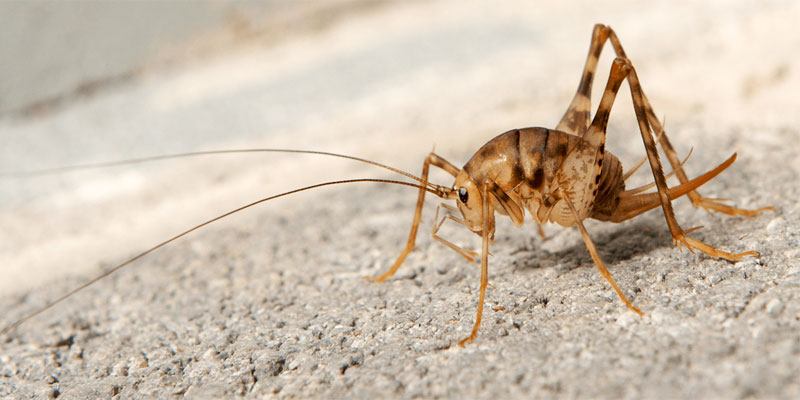

 Just tell me how to get rid of ’em.
Just tell me how to get rid of ’em.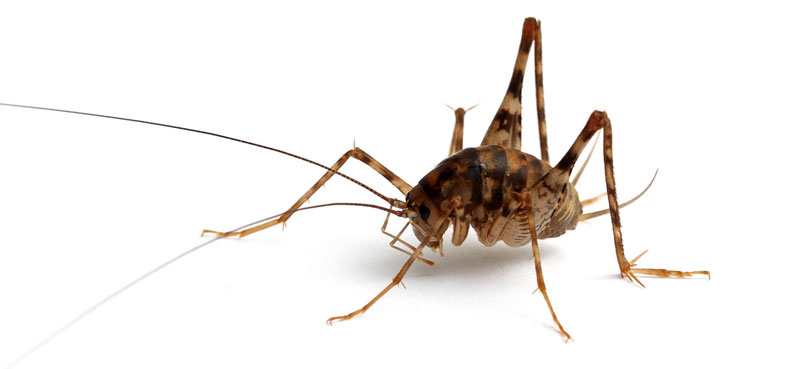
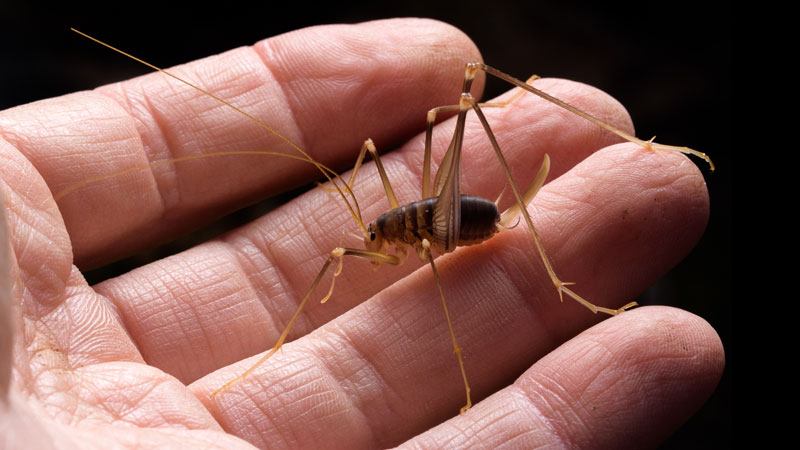
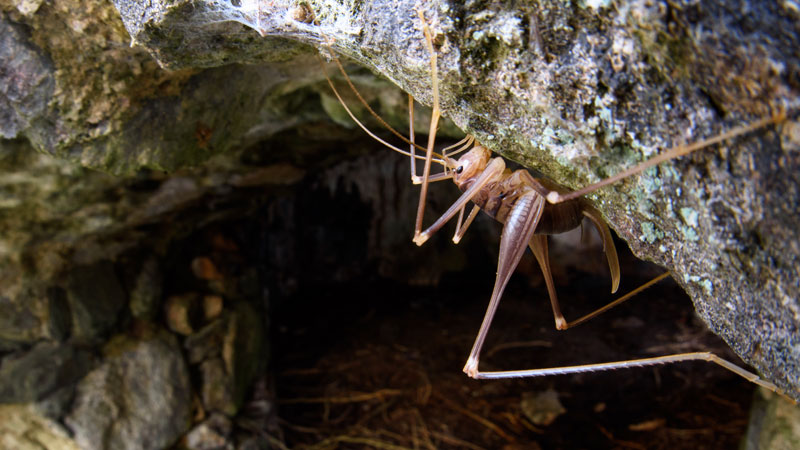
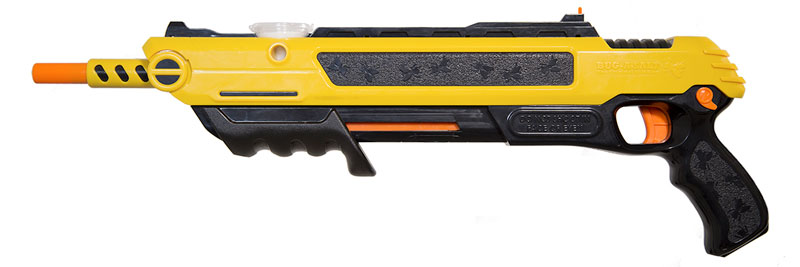
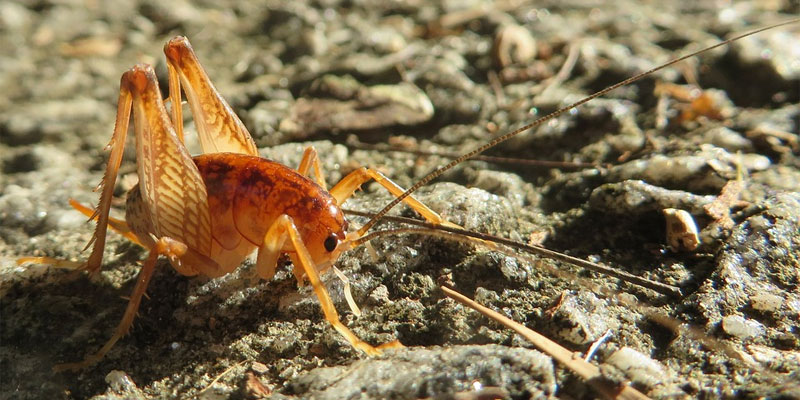
Why use lethal means? Glue traps are horrible for any creature, should be outlawed.. I catch and remove camel crickets using a cup and an index card. If more than one, put them in a deep bucket and take them outside. I will take your advice about checking for entry points and caulking.
They’re *bugs*. They do not have a nervous system that is well-enough developed to feel pain, no matter what the science-denying PETA loons claim. So when it comes to camel crickets or any other unwanted creepy crawly, kill ’em any way you can.
Catch Them?? Are You Kidding Me?? These Damn things Spring four feet into the air in no repeat direction when you get within 3 feet of them. They have built in Sonar allowing them to know when you are trying to kill them with either a fly swatter, a towel or any tool of destruction! These things are Scary Looking and have hopping ability like an Olympic Gold Medalist! They hop into the air the second you even try to exterminate them. I say DESTROY this UNGODLY Looking Creature of destruction!! They eat your clothes if you have a laundry room in the basement.
They are the devil and should be illegal
I use to use a container and a piece of cardboard to catch them. At 73 years of age I could go a few rounds with them but knees and back not permitting that anymore. I now use a hand vacuum, take them outside and toss them. I don’t believe in killing something that isn’t really harmful or dangerous. I see one or two every few weeks. I will try the peppermint oil.
With the Cedar oil and Peppermint oil, do I need to dilute with water? I think I saw it can be diluted with white vinegar possibly? I need something natural so my dogs don’t get into anything harmful to them. If I’m able to catch them and take them outside, I will. But I really don’t like waking up to seeing one on the ceiling above my head! I just caught one and I used a toothpick to see if it would bite it…sure enough two little black clampers (not sure what else to call them) bit onto the toothpick! The article says they can’t bite, but I’m not so sure about that! I think I’ll start with the Cedar or Peppermint oil and see how it goes! Interesting little suckers!
Try using a ratio of 1 cup water, 1/4 cup white vinegar, and 10 drops of peppermint oil (or cedar oil). Put this mixture in an empty spray bottle and spray around the perimeter. This solution also works great for spiders and other small pests. Thanks for bringing this up… I’ll add it to the article above.
Are you doing this spray inside or outside?
Natural repellents including essential oils work better when sprayed indoors since they’ll last a bit longer.
I got a Calico cat last year, and she loves hunting these crickets downstairs. The problem is she can spend TOO MUCH time doing this. She is preoccupied with it. Now I will use one of the natural remedies mentioned here to get rid of these crickets so my cat will come upstairs and play with me!
Thanks everyone for all of this information. I’m going to use all the oil suggestions as well as Dawn liquid trick. I’ll let you know what I see. Have been successful catching some with the glue traps but needed more options .
I catch and release them when I can using a cardboard box and a paper towel, but you really need to do this before 1 or 2 camel crickets turn into 100, as I’ve found out the hard way. I thought if I kept the humidity in the basement under control that would keep them from multiplying but it didn’t work out that way. In the process of getting rid of my infestation I probably ended up killing almost as many as I released, it just became too much to catch them all, so a handful ended up in the vacuum cleaner, while others died as a result of consuming ant bait I put down (I suspect the ants were providing food to the crickets).
They are the scariest things I have ever seen!
I almost didn’t believe Cornell staff when I called and they said harmless.
Will try your suggestions…thnx
For those of you that “catch and release” these demonic bugs…I am really confused. If you throw them in the yard they will just end up coming back to your house or your neighbors. It’s not just clothes they eat. They also destroy the foundation of your house. And they reproduce quickly. It will not take long to be infested and that can add into some serious money. My answer for them is death and always will be.
Can i diffuse the oil with a diffuser or do i have to spray directly in the area?
When using essential oils for pest control, you’ll want to create a spray. It’s best to buy an empty spray bottle from Target, Home Depot, Dollar Tree (cheapest), etc. as simply rinsing out an empty bottle of Windex or other household cleaner may not get rid of that chemical scent.
With most pests, you’ll use 10-20 drops of essential oil per cup of water.
How do they reproduce… do they lay eggs ?
Yes, they typically lay eggs in early spring. But, they very rarely lay eggs indoors.
If they rarely lay eggs indoors how come I see a lot of tiny baby crickets around
even in the winter
These are evil bugs
Camel crickets might be quick to jump, but they’re not quicker than a rubber band. I pull one back on my index finger and let it rip. It kills them before they know it’s coming. It sounds cruel, but it’s probably more humane than death by insecticide. Just keep a lot of rubber bands handy. You’ll eventually wipe them out. Think of it as all out war.
I have used a quick blast of some carb and choke cleaner.
Kills them in about 6 seconds.
what about bombing
How is the Neem Oil option used/applied and what is the suggested mixture ratio? Thank you.
Neem oil bottles usually list the ratio on the label when using as an insecticide but for general pest control use: 1 tsp neem oil + 1/4 tsp liquid dish soap (acts as an emulsifier) + 1 qt warm water. Mix all together in an empty spray bottle.